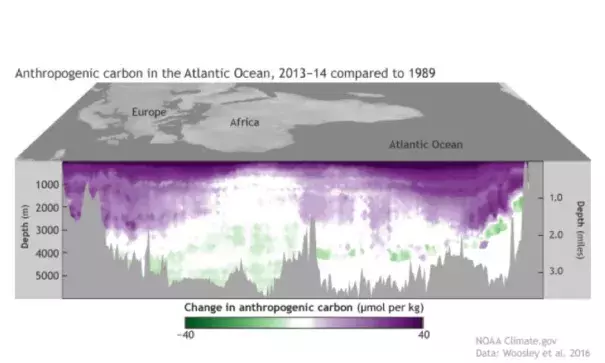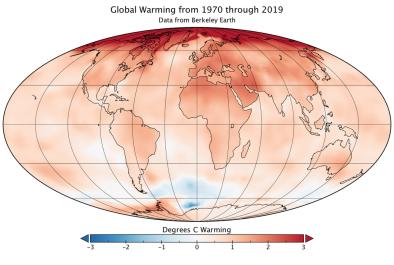Cruises cut a slice through the Atlantic's carbon pie

Burning fossil fuels releases carbon dioxide into the atmosphere, and about a third of it winds up being absorbed by the ocean. This uptake slows the impact of carbon dioxide on Earth's temperature, but it comes at the cost of ocean acidification that harms shellfish, coral, and other marine life. According to 2016 research from NOAA and university oceanographers, the amount of fossil-fuel carbon absorbed by the Atlantic Ocean increased significantly between the 1990s and the 2000s, causing surface pH to drop by roughly 0.4% per year.
This image shows changes in the concentration of fossil-fuel carbon along a vertical slice through the Atlantic Ocean measured during repeat ship cruises from three eras: the late 1980s/early 1990s, 2003/2005, and 2013/2014. Purple indicates parts of the ocean where human-generated carbon increased over the roughly 20-year period, and green indicates places where it decreased. The darker the color, the bigger the change. Gray indicates submarine mountains and other topography of the ocean floor.
...
The study found that the Atlantic Ocean absorbed increasing amounts of carbon at high latitudes and decreasing amounts of carbon closer to the Equator. In addition, the increase in absorbed carbon was greater in the Northern Hemisphere and extended farther down the water column. The researchers cautioned that their study may have overstated the depth to which additional carbon was absorbed in the Southern Hemisphere.
Related Content





